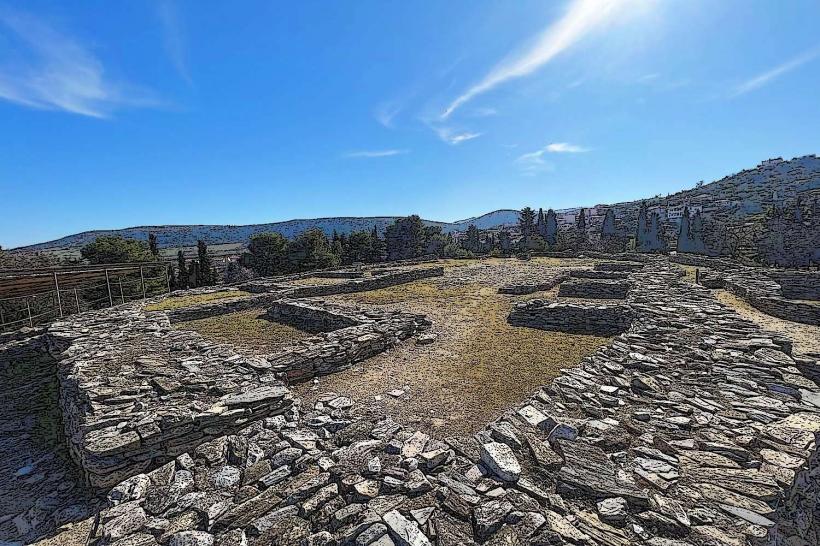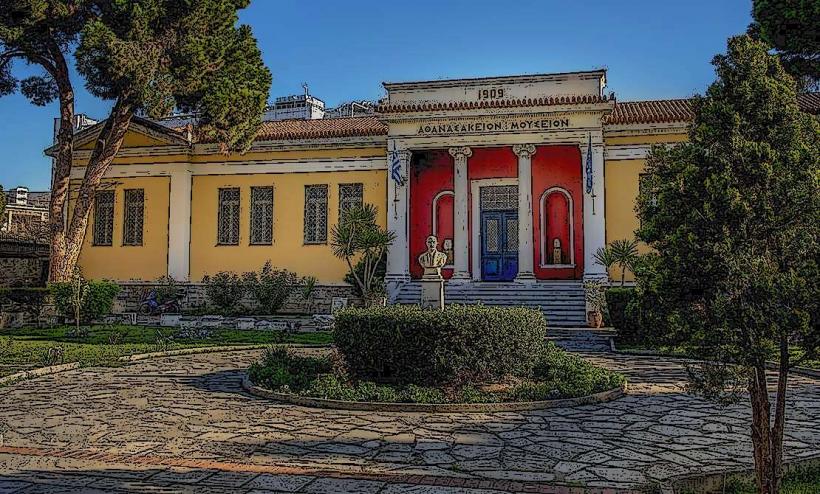Information
Landmark: Pelion Mountain VillagesCity: Volos
Country: Greece
Continent: Europe
The Pelion Mountain Villages (Greek: Χωριά του Πηλίου) are a group of picturesque, traditional villages nestled on the slopes of Mount Pelion (Greek: Πήλιο) in central Greece. Pelion is located between the Aegean Sea and the Pagasetic Gulf, and is known for its natural beauty, rich history, and the unique charm of its villages. These villages are famous for their stone-built houses, cobblestone streets, lush forests, and panoramic views, making them a popular destination for travelers looking for both natural and cultural experiences.
1. Geography and Location
- Mount Pelion is located in the Thessaly region of central Greece, near the city of Volos. It rises to an elevation of 1,624 meters (5,328 feet), with its lush forests, rugged terrain, and scenic views offering a peaceful escape from the coastal lowlands.
- The mountain is traditionally known as the homeland of the centaurs, mythical creatures from Greek mythology, half-human and half-horse, who were said to have lived in the dense forests and rugged terrain of Pelion.
- The villages of Pelion are spread across the mountain's slopes, each with its own distinct character, nestled in verdant landscapes with views of the Aegean Sea, the Pagasetic Gulf, and the Thessalian Plain.
2. Historical and Cultural Significance
- Byzantine and Ottoman Influence: The villages of Pelion have a rich historical heritage, shaped by both the Byzantine Empire and later the Ottoman rule. This blend of cultures is evident in the region's architecture, religious practices, and local traditions.
- The Pelion villages played an important role in the 19th and early 20th centuries, especially during the Greek War of Independence (1821-1829) and the struggle for liberation from the Ottoman Empire.
- The stone architecture of the villages is a testament to the region’s long history and the skill of local craftsmen who built homes, churches, and public buildings with local stone and wood, creating a distinctive architectural style that still exists today.
3. Villages of Pelion
The Pelion region is home to several charming villages, each with its own unique features. Some of the most notable villages include:
Portaria: Known as the “gateway to Pelion,” Portaria is one of the most well-known villages, perched above Volos, with stunning views of the surrounding area. It is famous for its traditional architecture, stone houses, and cobblestone streets. Portaria is also home to several old monasteries, churches, and public fountains. Visitors can also explore traditional tavernas and enjoy Greek cuisine.
Makrinitsa: Often referred to as the “balcony of Pelion” because of its panoramic views of the Pagasetic Gulf, Makrinitsa is another popular village. It is one of the most famous mountain villages in Greece and is known for its well-preserved houses, fountains, and plazas. The village is listed as a protected heritage site, and its architecture is an excellent example of the traditional Pelion style.
Kissos: This quieter village is set amidst lush vegetation and features a mix of traditional stone-built houses and magnificent natural scenery. It is a great base for nature lovers and hiking enthusiasts, as it is surrounded by forests, gorges, and mountain trails.
Tsagarada: Tsagarada is famous for its century-old trees, particularly the enormous plane trees in the village’s main square. The village is known for its traditional mansions and its unique location, situated in an area where mountain and sea meet. Tsagarada is also home to several ancient churches, including the church of Agia Paraskevi, which dates back to the 17th century.
Milies: Milies is a historical village with a rich cultural heritage, particularly known for its old railway station and the Milos steam train, which operates along a historic route that connects Volos to the mountain villages. The village is also known for its traditional stone-built houses and the Church of Agios Nikolaos, which features remarkable frescoes.
Agios Lavrentios: Known for its beautiful architecture and peaceful atmosphere, Agios Lavrentios is a small village that is ideal for those looking for a quiet, picturesque escape. It is located in the heart of Pelion, surrounded by forests and offering magnificent views.
4. Natural Beauty and Activities
Hiking and Nature Trails: Pelion is an excellent destination for hiking enthusiasts. The mountain offers a wide range of trails that cater to all levels of experience, with routes passing through forests, ravines, and offering views of the Aegean Sea. Many of the hiking trails connect the mountain villages, so visitors can explore the traditional villages while enjoying the scenic beauty of Pelion.
Beaches: Pelion is not only about mountains and villages but also boasts some beautiful beaches along its coast. The beaches are mainly located on the Aegean Sea side and include Mylopotamos, Papa Nero, Damouchari, and Agios Ioannis, which are known for their crystal-clear waters and pristine landscapes. The beaches are ideal for swimming, sunbathing, and enjoying the Mediterranean climate.
Botanical Diversity: Pelion is famous for its flora and fauna. The lush greenery of the mountain is home to a diverse range of plants, including oak, pine, and chestnut trees, as well as wildflowers. The mountain’s ecosystem is perfect for nature lovers, bird watchers, and anyone interested in exploring Greece’s biodiversity.
5. Traditional Architecture
- The architecture of the Pelion villages is distinctive and traditional. Many of the houses are built using stone, which was sourced locally, and feature large wooden balconies, cobblestone streets, and arched doorways. The houses are often painted in earthy tones, blending harmoniously with the natural surroundings.
- Some villages, like Portaria and Makrinitsa, feature large mansions built by wealthy traders in the 19th century, offering insight into the region's prosperity during that period.
6. Local Cuisine
The Pelion villages are known for their traditional Greek cuisine, which is influenced by both the mountain and sea. Local specialties include:
- Spetsofai: A dish made with sausage, peppers, and tomatoes.
- Bougatsa: A sweet or savory pastry filled with cream or cheese.
- Local cheeses: Feta and mizithra cheese, often used in a variety of dishes.
- Honey: Pelion is famous for its production of honey, which is often used in traditional desserts and baked goods.
- Tsipouro: A local grape spirit, which is often enjoyed in the villages.
7. Best Time to Visit
Spring and autumn are the best seasons to visit Pelion. During spring, the wildflowers are in bloom, and the weather is pleasant, making it ideal for hiking and exploring the villages. In autumn, the cooler temperatures are perfect for outdoor activities, and the region's natural beauty is accentuated by the changing colors of the trees.
Summer can also be a good time to visit, particularly for those who want to enjoy the beaches along the Aegean coast, but it can be hot in the lowlands, although the mountain areas offer cooler temperatures.
Conclusion
The Pelion Mountain Villages offer a unique combination of natural beauty, rich history, and traditional Greek culture. Whether you're looking to explore ancient villages, enjoy scenic hikes, relax on beautiful beaches, or indulge in delicious local cuisine, the Pelion region is a destination that has something for everyone. The combination of mountain landscapes and seaside charm makes it one of the most picturesque and culturally rich regions in Greece, perfect for those looking for an authentic Greek experience.



